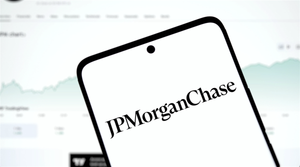
Global financial services giant JPMorgan Chase (NYSE: JPM) reported Q2 CY2025 results beating Wall Street’s revenue expectations, but sales fell by 10.5% year on year to $44.91 billion. Its GAAP profit of $4.96 per share was 10.4% above analysts’ consensus estimates.
Is now the time to buy JPMorgan Chase? Find out by accessing our full research report, it’s free.
JPMorgan Chase (JPM) Q2 CY2025 Highlights:
- Net Interest Income: $23.21 billion vs analyst estimates of $23.61 billion (2% year-on-year growth, 1.7% miss)
- Revenue: $44.91 billion vs analyst estimates of $43.63 billion (10.5% year-on-year decline, 2.9% beat)
- EPS (GAAP): $4.96 vs analyst estimates of $4.49 (10.4% beat)
- Market Capitalization: $802.3 billion
Company Overview
Tracing its roots back to 1799 when its earliest predecessor was founded by Aaron Burr, JPMorgan Chase (NYSE: JPM) is a leading financial services company offering investment banking, consumer banking, commercial banking, and asset management services globally.
Sales Growth
Net interest income and and fee-based revenue are the two pillars supporting bank earnings. The former captures profit from the gap between lending rates and deposit costs, while the latter encompasses charges for banking services, credit products, wealth management, and trading activities.
Over the last five years, JPMorgan Chase grew its revenue at a solid 8.2% compounded annual growth rate. Its growth beat the average bank company and shows its offerings resonate with customers, a helpful starting point for our analysis.
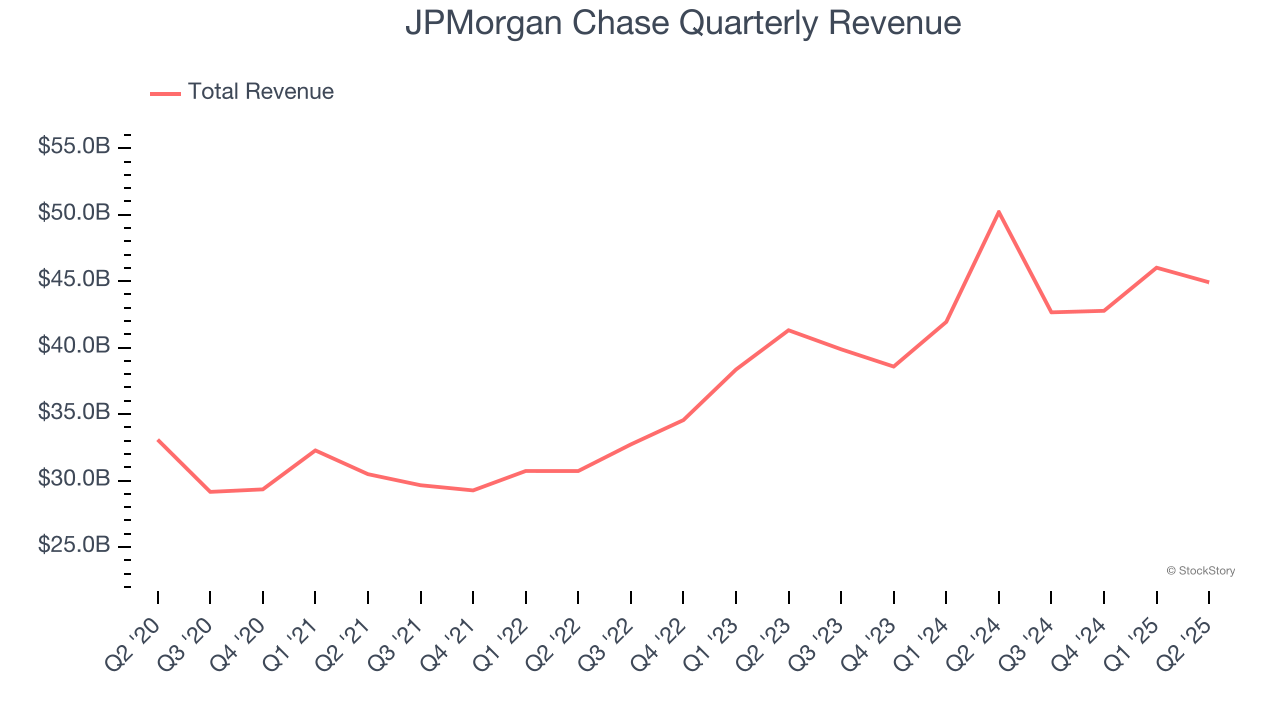
Long-term growth is the most important, but within financials, a half-decade historical view may miss recent interest rate changes and market returns. JPMorgan Chase’s annualized revenue growth of 9.6% over the last two years is above its five-year trend, suggesting its demand was strong and recently accelerated. 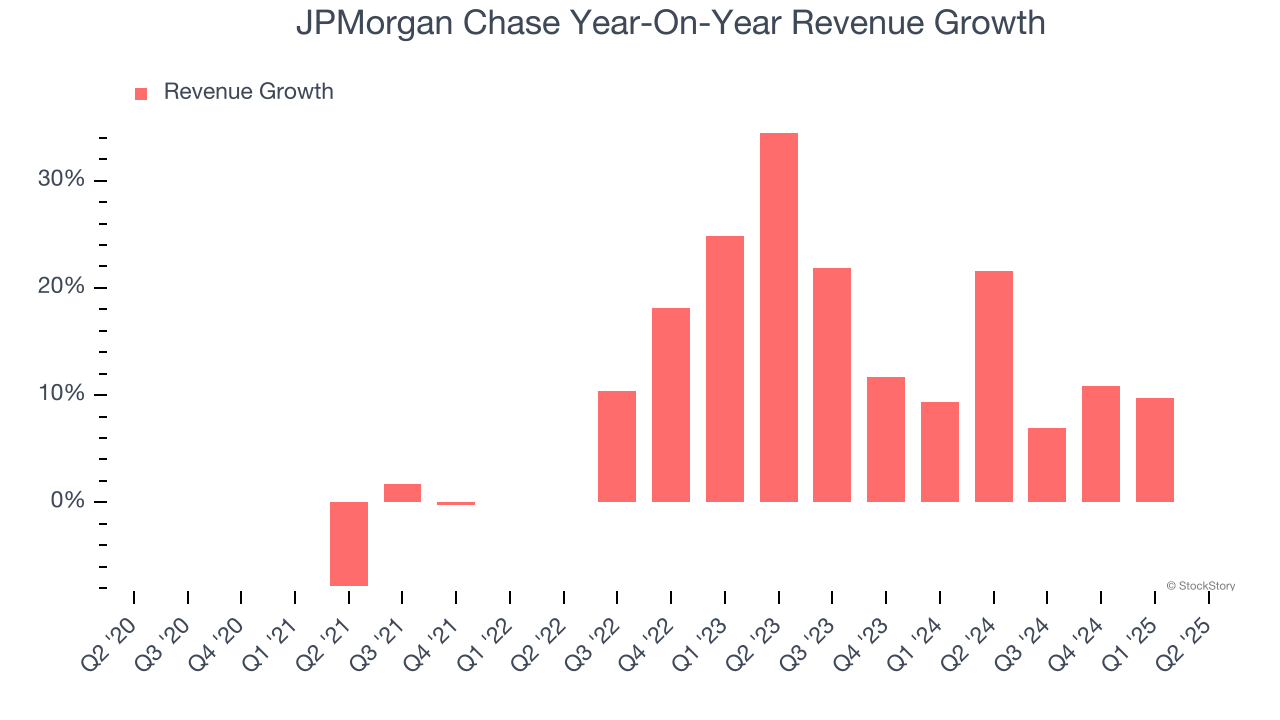 Note: Quarters not shown were determined to be outliers, impacted by outsized investment gains/losses that are not indicative of the recurring fundamentals of the business.
Note: Quarters not shown were determined to be outliers, impacted by outsized investment gains/losses that are not indicative of the recurring fundamentals of the business.
This quarter, JPMorgan Chase’s revenue fell by 10.5% year on year to $44.91 billion but beat Wall Street’s estimates by 2.9%.
Net interest income made up 50.3% of the company’s total revenue during the last five years, meaning JPMorgan Chase’s growth drivers strike a balance between lending and non-lending activities.
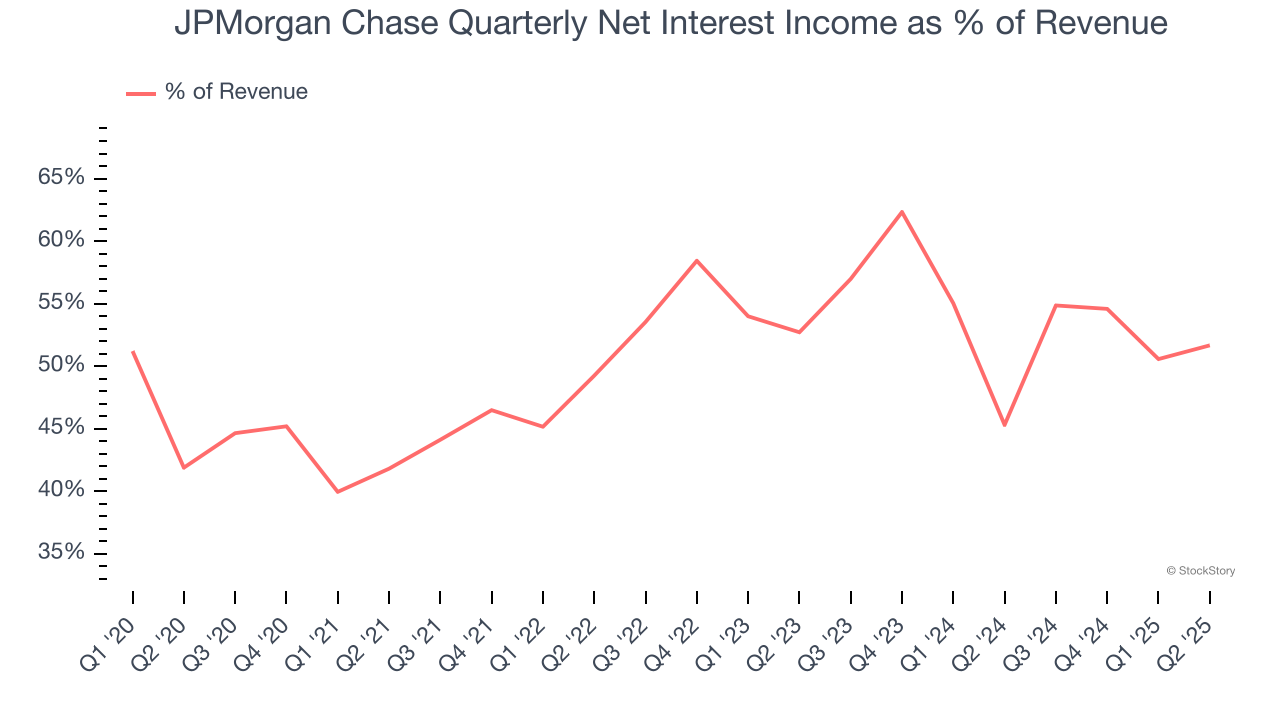
Our experience and research show the market cares primarily about a bank’s net interest income growth as non-interest income is considered a lower-quality and non-recurring revenue source.
Unless you’ve been living under a rock, it should be obvious by now that generative AI is going to have a huge impact on how large corporations do business. While Nvidia and AMD are trading close to all-time highs, we prefer a lesser-known (but still profitable) stock benefiting from the rise of AI. Click here to access our free report one of our favorites growth stories.
Tangible Book Value Per Share (TBVPS)
Banks operate as balance sheet businesses, with profits generated through borrowing and lending activities. Valuations reflect this reality, emphasizing balance sheet strength and long-term book value compounding ability.
When analyzing banks, tangible book value per share (TBVPS) takes precedence over many other metrics. This measure isolates genuine per-share value by removing intangible assets of debatable liquidation worth. EPS can become murky due to acquisition impacts or accounting flexibility around loan provisions, and TBVPS resists financial engineering manipulation.
JPMorgan Chase’s TBVPS grew at an incredible 11.1% annual clip over the last five years. TBVPS growth has also accelerated recently, growing by 14.5% annually over the last two years from $78.84 to $103.40 per share.
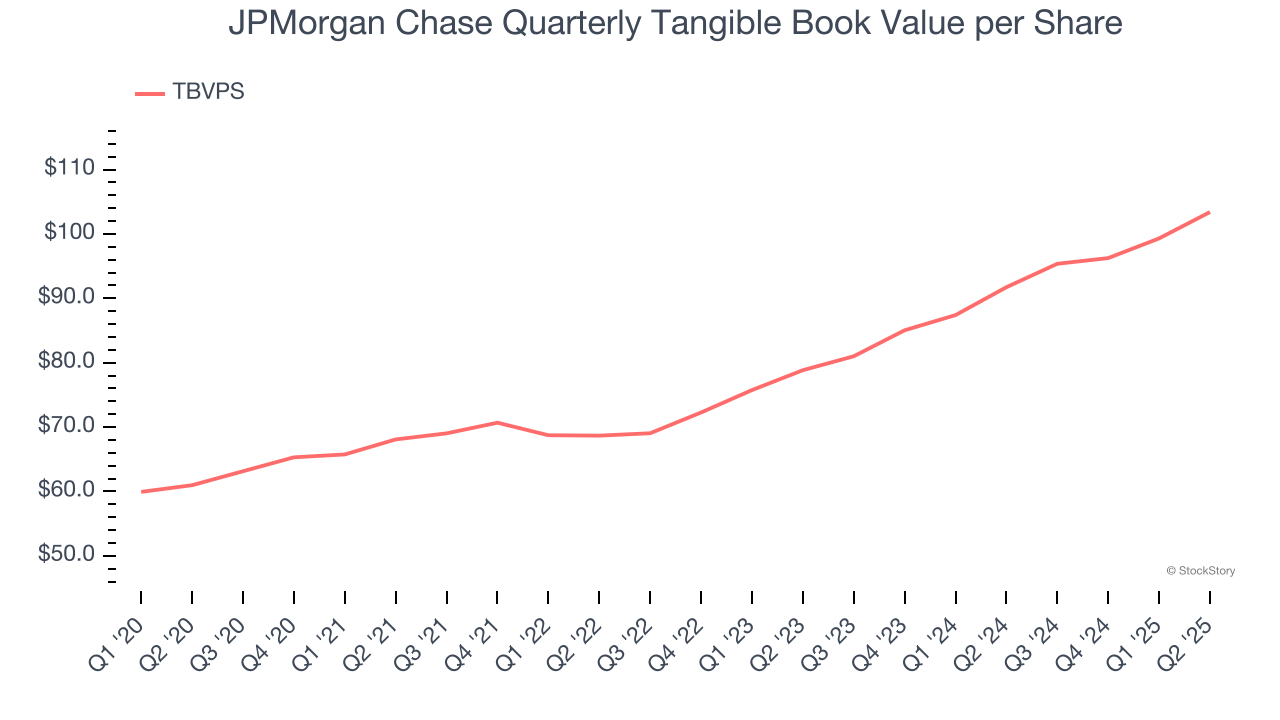
Over the next 12 months, Consensus estimates call for JPMorgan Chase’s TBVPS to grow by 4.4% to $107.92, paltry growth rate.
Key Takeaways from JPMorgan Chase’s Q2 Results
We enjoyed seeing JPMorgan Chase beat analysts’ revenue expectations this quarter. We were also happy its EPS outperformed Wall Street’s estimates. On the other hand, its net interest income missed. Overall, this print had some key positives. The stock remained flat at $286.91 immediately following the results.
Big picture, is JPMorgan Chase a buy here and now? If you’re making that decision, you should consider the bigger picture of valuation, business qualities, as well as the latest earnings. We cover that in our actionable full research report which you can read here, it’s free.
